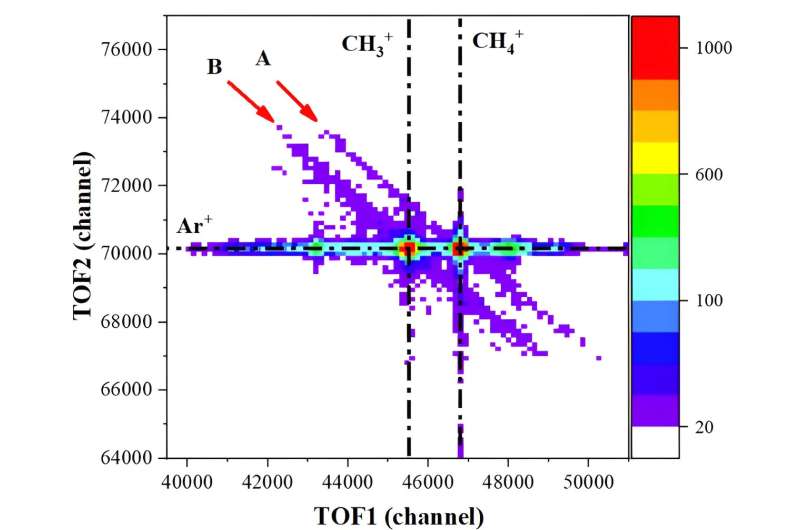This article has been reviewed according to Science X's editorial process and policies. Editors have highlighted the following attributes while ensuring the content's credibility:
fact-checked
peer-reviewed publication
trusted source
proofread
Novel molecular ionization dissociation pathway induced by Interatomic Coulombic Decay

A research group led by Prof. Ma Xinwen at the Institute of Modern Physics (IMP) of the Chinese Academy of Sciences (CAS) has observed a novel molecular ionization dissociation pathway triggered by Interatomic Coulombic Decay (ICD). The study, published in Physical Review Letters, verifies the theoretical prediction and has potential applications in developing new radiotherapy.
ICD is an important energy transfer process that generally exists in weakly bound systems, such as the van der Waals cluster, the hydrogen bond cluster, and the solution. It has been widely accepted that ICD-induced molecular fragmentation occurs through a two-step process, involving ICD as the first step and dissociative-electron-attachment (DEA) as the second step.
However, some theoretical calculations recently proposed a one-step mechanism where ICD directly causes the dissociation of a molecule. If this mechanism is validated, the traditional view of ICD will be changed.
The researchers at IMP performed an experiment by employing a transversal reaction microscope and selecting the ArCH4 dimer as a prototype system.
Besides the well-known ionization pathways induced by ICD (channel A), a coincident island (channel B) representing the Ar+/CH3+ ion pair was observed, which demonstrates CH4 ionization dissociation induced by ICD. The yield of channel B is 1.7 times higher than that of channel A, indicating that it is of high efficiency.
Through this pathway, it will be possible to construct an antenna-receiver complex and to enhance the cross-section of the molecular ionization dissociation by at least one order.
This study offers a novel approach to directly break covalent bonds in DNA molecules, bypassing the processes involving DEA.
More information: S. Yan et al, Molecular Ionization Dissociation Induced by Interatomic Coulombic Decay in an ArCH4 -Electron Collision System, Physical Review Letters (2023). DOI: 10.1103/PhysRevLett.131.253001
Journal information: Physical Review Letters
Provided by Chinese Academy of Sciences





















